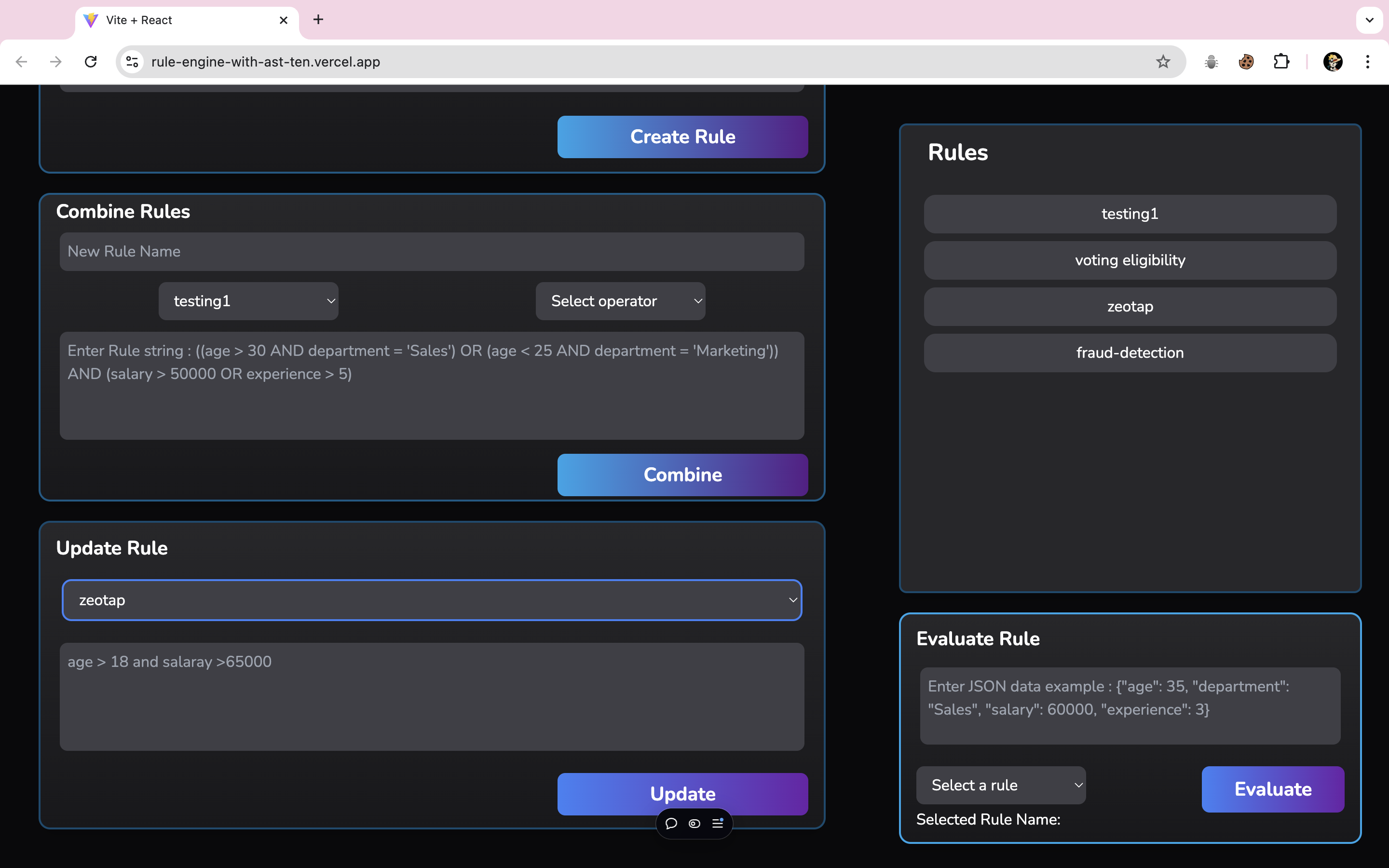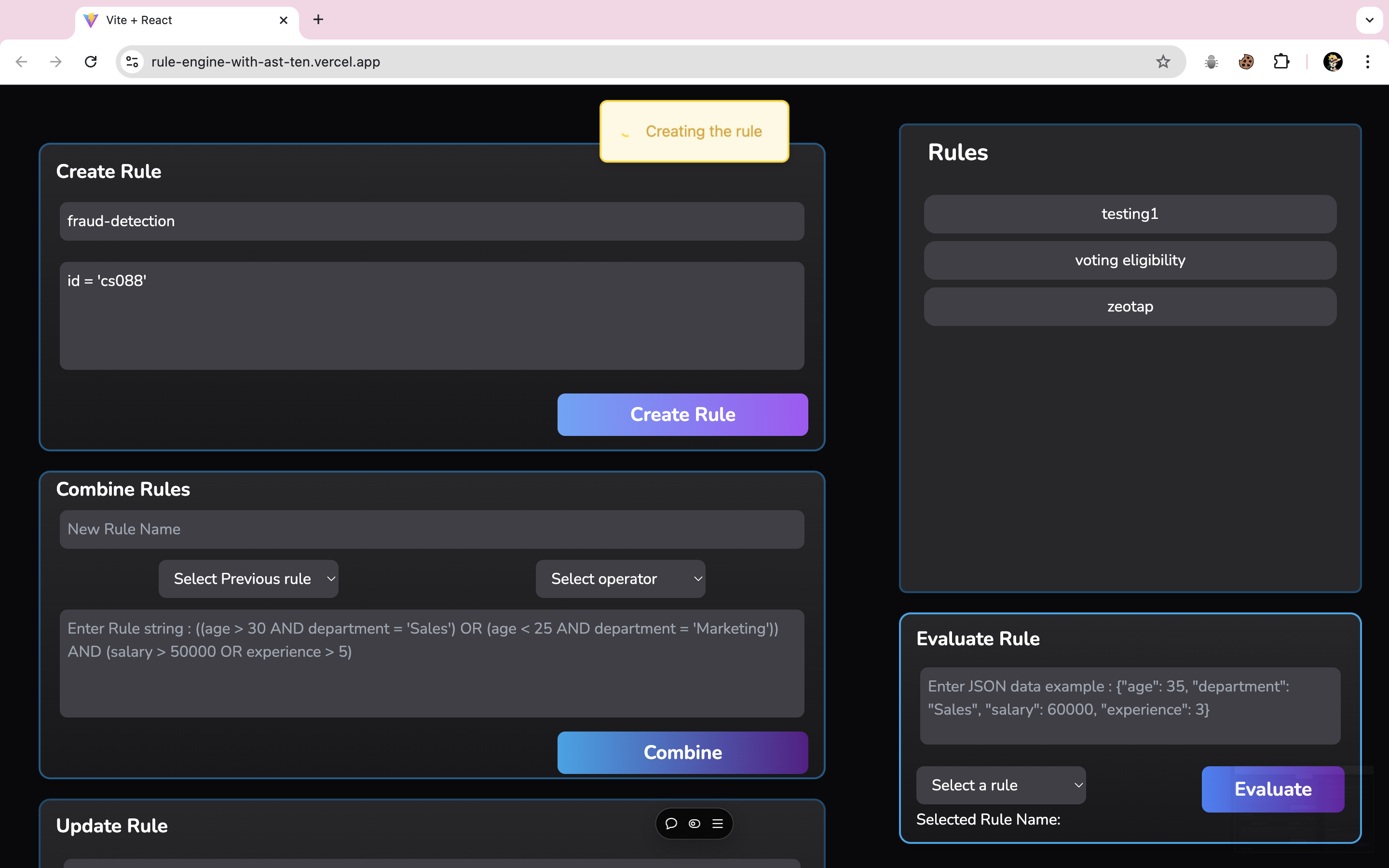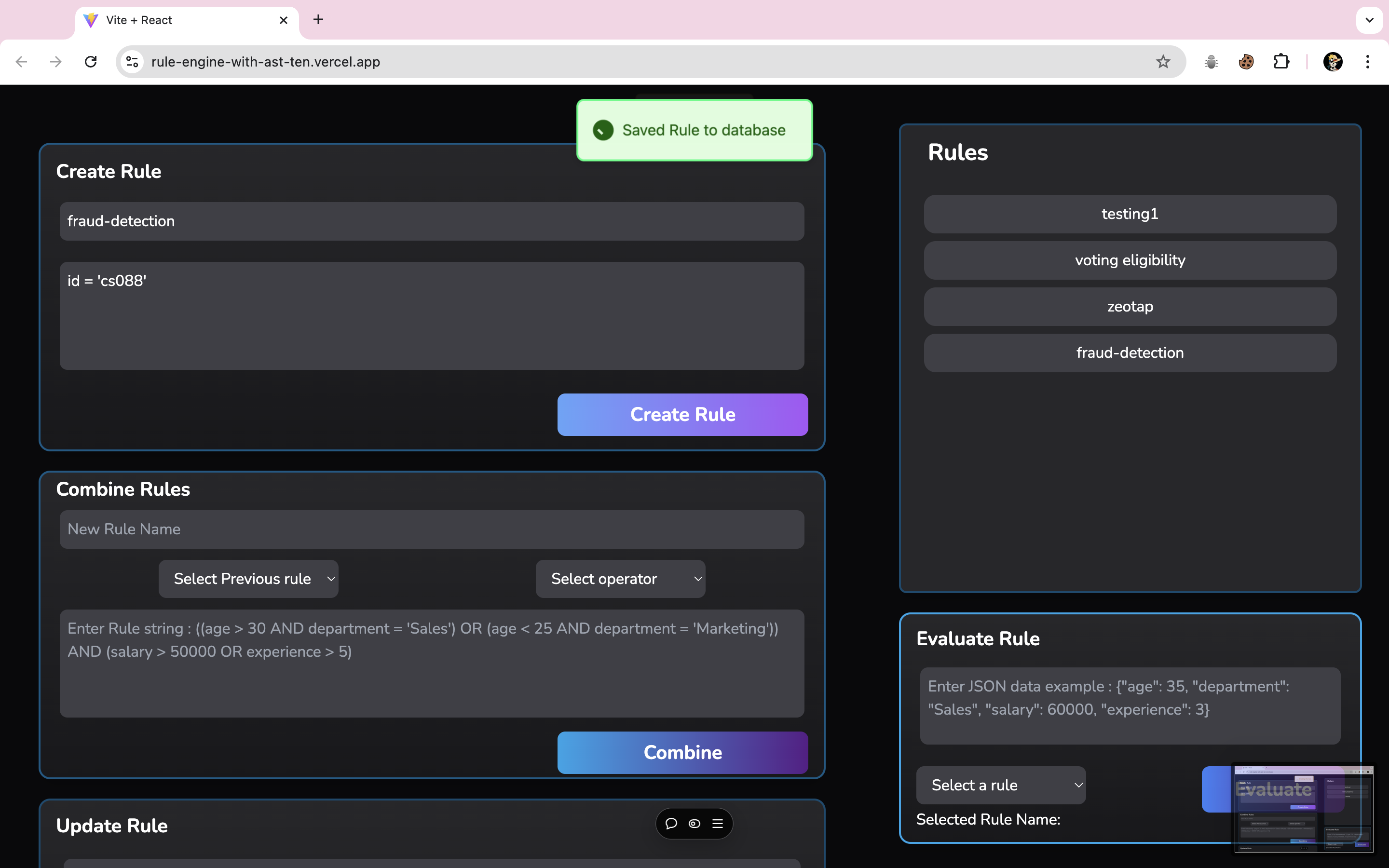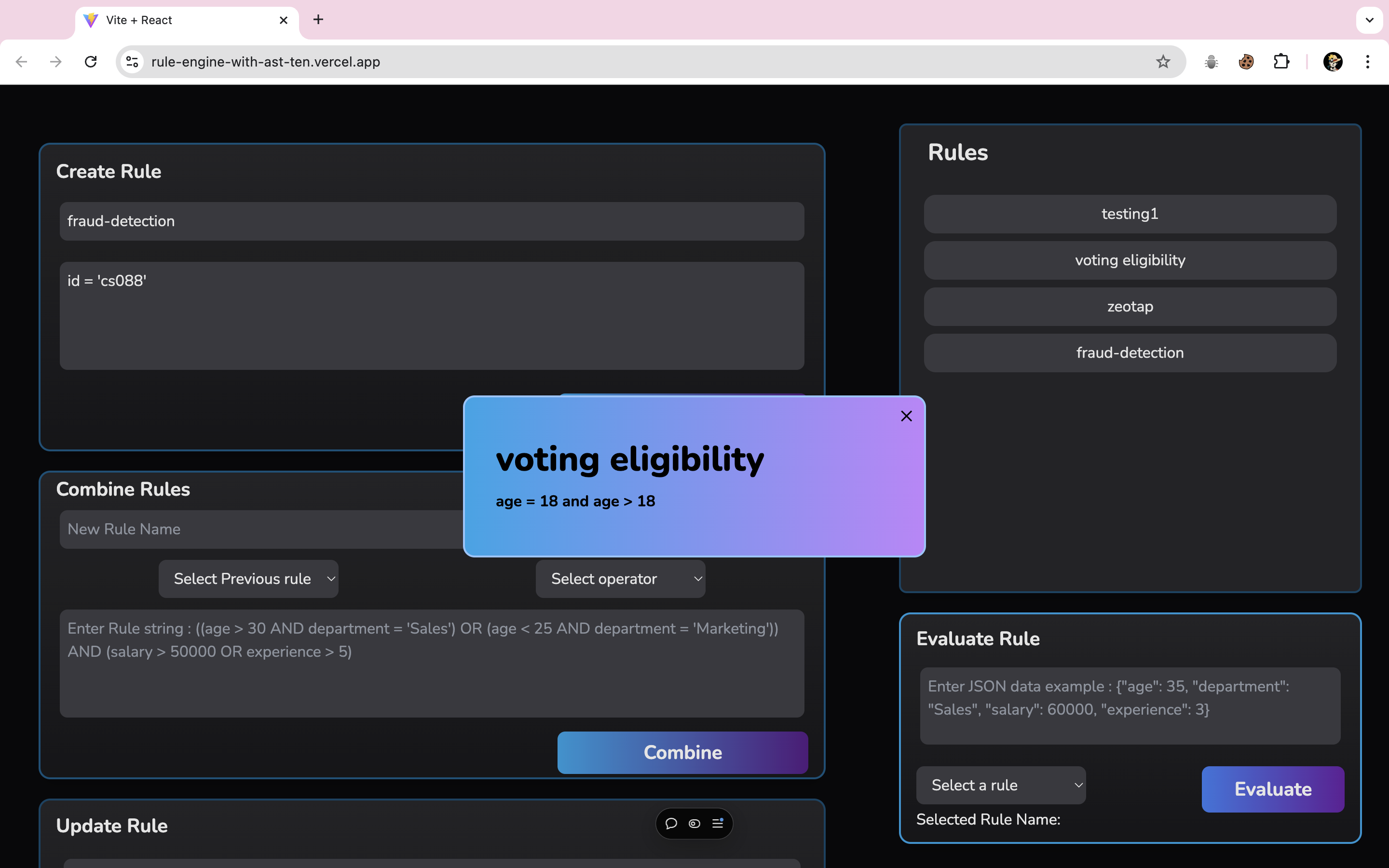Building a Rule Engine with Abstract Syntax Tree
 Pavan Kumar K
Pavan Kumar K
Hi there! I’m excited to share a project I recently worked on, which is very simple but versatile and powerful for Evaluating Complex Conditions
This project is a rule engine that lets users create, modify, and evaluate rules based on specific conditions ( like age, department, salary, and more )
It’s built around an Abstract Syntax Tree (AST), a structure that makes it easy to break down, manage, and evaluate complex rules.
source code : GithHub
The application is deployed at Vercel : Live Demo
Technology Stack
Frontend: React + vite, Tailwind CSS
Backend: Node.js, Express.js
Database: MongoDB
So, What Exactly Does This Rule Engine Do?
Imagine an HR team trying to decide which employees qualify for certain benefits. They need a tool that can filter employees based on criteria like age, experience, employment status, and maybe even salary and department. With this rule engine, the HR team can set up these conditions on a web interface, give the rule a name like “Screening Round,” and specify criteria such as:
Age >= 18
Years of Experience >= 1 year
Employment Status = "Active"
Later, if they want to refine or expand the rule, they can easily add more criteria like
Salary < $100,000
Domain = "Web Development."
The backend automatically updates the rule, structuring it as an AST for efficient processing.
When the HR team receives a list of applicants, they can simply pass in each applicant’s data in JSON format, and the rule engine evaluates it against the rule's AST to see who qualifies.
Why Use an AST? Why Not Just Store Rules Directly?
Good question!
As rules get more complex, they involve multiple conditions and logical operators like >=, =, AND, and OR. Storing these rules directly in a database would be inefficient and would require a lot of additional processing logic to interpret and evaluate them correctly.
An AST makes this easier. Instead of storing raw strings, we break each rule down into a structured tree of logical components. This makes it easy to:
Parse and combine rules without complex string manipulation.
Evaluate conditions efficiently, even with many nested operators.
Logical Clarity: The tree structure makes the rule logic easy to follow and understand, even for complex rules.
Wrapping Up
This rule engine project may sound technical, but the AST makes it user-friendly, adaptable, and efficient. Whether you’re an HR manager looking to streamline candidate screening or working in any field needing automated decision-making based on defined conditions, this rule engine brings structure and flexibility.
Thanks for reading about my project! Check out the Screenshots of UI




Subscribe to my newsletter
Read articles from Pavan Kumar K directly inside your inbox. Subscribe to the newsletter, and don't miss out.
Written by